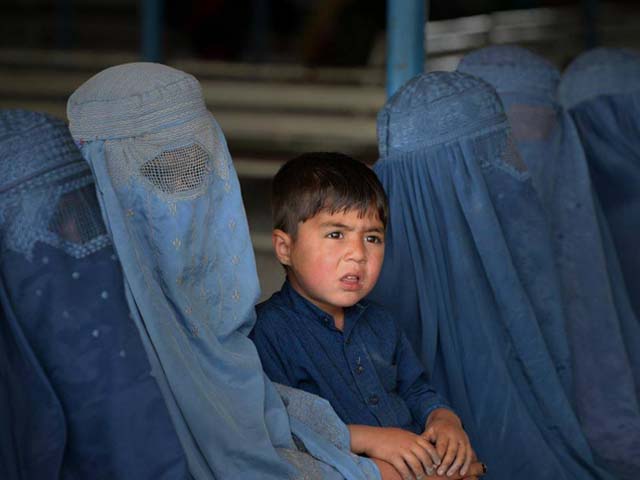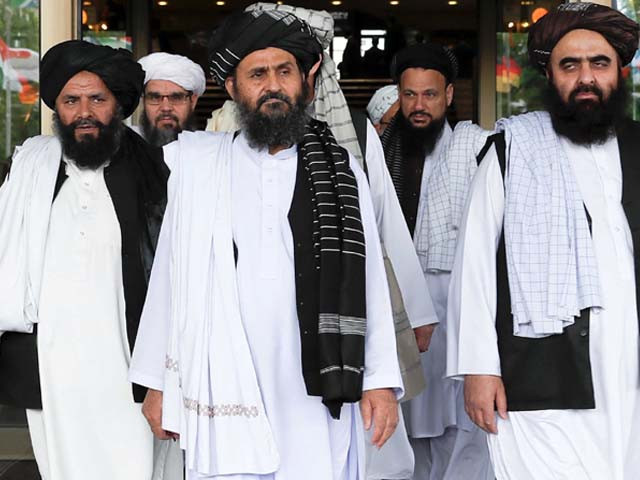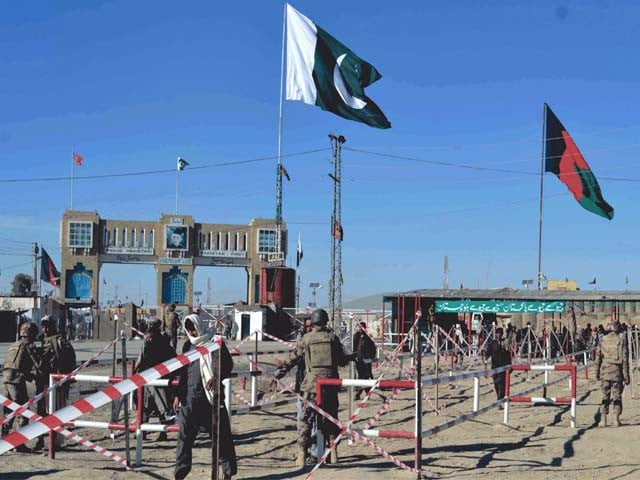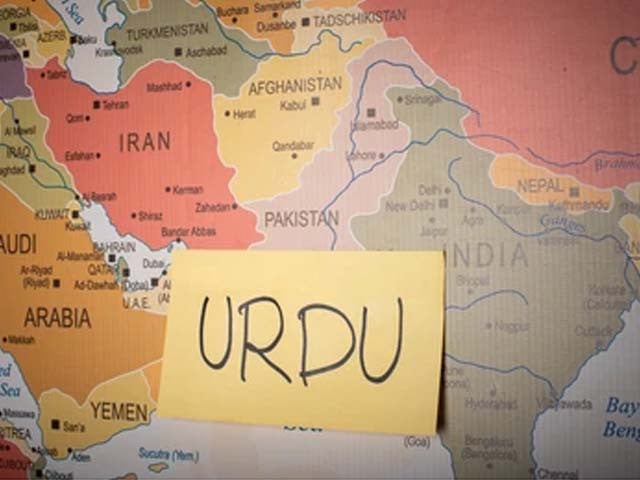
Why Afghan refugees were welcomed in Pakistan but not in Iran
Recent worldwide protests against racism and discrimination have drawn attention to Afghans’ plight in Iran, where they’ve been subjected to atrocities and discrimination from day one of their arrival in Iran. In April 2020, Iranian border authorities are reported to have tortured and thrown nearly sixty Afghans into a river. Only thirty-four bodies have been recovered so far. Later, in early June Iranian police in Yazd province fired live ammunition at a vehicle carrying Afghan refugees. Three Afghans were burned alive and several others injured.
These were not outlying incidents, but part of a deep-rooted pattern in Iranian society, which tends to look down on its neighbors: Arabs, Afghans, and Turks. In sharp contrast to Iranian society, not only did Pakistani society not look down on Afghans, but it welcomed them with open arms and open hearts when they first arrived in Pakistan in the late 1970s. The question that arises is: why were Afghans welcomed in Pakistan, but not in Iran?
Afghans and Pakistan
In addition to Pakistanis generally being a nice, hospitable, and caring people, there are a number of other reasons why Afghans were welcomed in Pakistan. First, for centuries, people from present-day Afghanistan had been immigrating to and settling in present-day Pakistan. When Afghans first started arriving in Pakistan, one group of people who welcomed them were those Pakistanis whose ancestors themselves had emigrated from Afghanistan at some point. Contrary to popular perceptions, the current Afghan emigration to Pakistan is not the first wave. It’s actually the latest wave in a series of emigrations from Afghanistan to the Subcontinent.
For example, during Mughal Emperor Aurangzeb’s era, the Kandahar area Abdalis, who were opposed to the Safavid Persians and their recapturing of Kandahar from the Mughals, left Afghanistan for Punjab. Aurangzeb welcomed them, and gave them the lands in the Multan area. Later, Ahmad Shah Durrani (also known as Abdali) – regarded as the father of modern Afghanistan – would be born amongst the Abdalis of Multan, who’d rule Multan for 150 years until 1818, when Ranjit Singh captured Multan from Abdalis.
Similarly, after the two Anglo-Afghan wars of the 19th century, many of the Afghans – such as Sher Ali the Kandahar governor – who sided with the British and pro-British Afghan rulers (Shah Shuja in the first Anglo-Afghan War 1838-1842, and Amir Yaqub Khan in the Second Anglo-Afghan War 1878-1880) left Afghanistan for the Subcontinent. Because of differences with Amir Abdur Rahman Khan, even the Victor of Maiwand Sardar Mohammad Ayub Khan ended up in Punjab. He died in Lahore in 1914, and was buried at the Durrani graveyard in Peshawar. Sardar Ayub’s descendants joined the Pakistan Army and Pakistan Civil Service.
Second, people (of different ethnicities) from present-day Afghanistan are known to have played a major role in spreading Islam in the Subcontinent. There were mainly two groups of people who promoted Islam in two different ways: first, the preachers; second, the conquerors. Both of these groups were in no short supply in Afghanistan, some of whose residents preferred settling in the Subcontinent in search of worldly and otherworldly rewards.
Two popular religious figures who from present-day Afghanistan settled in Punjab are Ali Hajwiri Ghaznavi (more commonly known as Data Ganj Bakhsh in Pakistan) and Yusuf Shah Gardezi. Hajwiri settled and preached in Lahore. Today his tomb is one of the largest shrines in Pakistan. Gardezi settled in Multan. They are both believed to have converted a large number of people to Islam. According to one account (Mountstuart Elphinstone’s The Kingdom of Caubul), the sufi Hasan Abdal was originally from Kandahar, where he’s known as Baba Wali and has a shrine in Arghandab district.
The conquerors of the Subcontinent from present-day Afghanistan are too well-known to describe in detail. Amongst the tens of people who invaded the Subcontinent from Afghanistan Mahmud Ghaznavi, Mohammad Ghauri and Ahmad Shah Durrani/Abdali stand out. These conquerors’ descendants are still found in Pakistan bearing the same last names. Zaheeruddin Babur, born in Ferghana, founded his empire in Kabul, where he lies buried today, and later expanded it to the Subcontinent. Pakistan’s naming its ballistic missiles after Ghaznavi, Ghauri, Babur, and Abdali shows a close people-to-people connection between the two countries.
As the British were preparing to leave India in 1947, Indian Muslims, who according to the Pakistan Movement supporters were a different nation from Hindus, needed a separate state for themselves. Thus, Pakistan – a separate state for Indian Muslims – was founded on the basis of Islam. Since Islam was mainly spread and promoted in the Subcontinent by people from present-day Afghanistan and Central Asia, it put Afghans in a position where they were respected in Pakistan after 1947.
Third, Afghans’ determination to keep the British colonialists out of their country had endeared them to the people of the Subcontinent. Before the independence, many Indian Muslim students studying in the UK regularly identified themselves as “Afghan.” These students were “embarrassed” of their British Indian passports. Aslam Khan Khattak, who later became Pakistan’s ambassador to Afghanistan, Iran and Iraq was one of those students. More details can be found in his memoir A Pathan Odyssey.
Afghanistan also had a profound impact on Indian Muslim intellectuals such as the 20th century thinker, philosopher, and poet Mohammad Iqbal. In 1933, Iqbal visited Afghanistan, where – in addition to meeting kings Nadir Shah and his successor Zahir Shah – he visited the tombs of Babur, Mahmud Ghaznavi, and Ahmad Shah Durrani in Kabul, Ghazni, and Kandahar respectively. During his travels in Afghanistan, Iqbal composed Farsi poems for Afghans and Afghanistan, which he published in a booklet named (مسافر) Traveler in 1934.
In Traveler, Iqbal had nothing but immense admiration for Afghanistan and its people. For instance, in a poem for Kabul, Iqbal observes that the city is better than Delhi, reminiscent of Babur’s praiseworthy attitude toward Kabul in his memoir, the Baburnama. In a separate poem (although not in Traveler), Iqbal describes Afghanistan as the heart of Asia, whose prosperity is Asia’s prosperity and whose corruption is Asia’s corruption.
Fourth, although after Pakistan’s founding bilateral relations between the two governments remained tense due to the so-called Durand Line issue, in both Indo-Pak wars of 1965 and 1971 Afghanistan officially remained neutral but in reality supported Pakistan. Not only did Afghanistan not open a second front against Pakistan, but it also assured security on the Afghan-Pak border so Pakistan could fully concentrate on a one-front war with India.
During the 1965 Indo-Pak war, President Ayub thanked the Afghan ambassador Nur Ahmad Etemadi for Afghanistan’s “neutrality” in the war, observing that Pakistan would never forget Afghanistan’s “gesture of goodwill.” After the war, Ayub flew to Kabul to thank king Zahir Shah, who expressed tacit support for Pakistan’s position on the Kashmir issue. Additionally, Zulfiqar Ali Bhutto also publicly thanked Afghanistan for “assuring security” on Pakistan’s northwestern border during the Indo-Pak wars of 1965 and 1971.
Fifth and final, the shared ethnicity, language, and culture between the Pashtuns in Afghanistan and Pakistan also played an important role in welcoming Afghans to Pakistan. The fact that the majority of Afghans settled in Pashtun majority areas in Pakistan is an indication of the importance of shared ethnicity and language (although shared ethnicity, culture, and language between Afghans and Iranians didn’t lead to Iranians’ welcoming Afghans).
Iran and Afghans
For starters, historically, the phrase Iran was referred to a much larger geography than the current Islamic Republic of Iran (which was called Persia until 1935). The historical Iran comprised parts of Central Asia, the Caucuses, Iraq, Turkey, Afghanistan, and Pakistan. In 1935, Persia decided to change its name to Iran, tampering with history with the stroke of a pen.
Having changed its name, Iran embarked on promoting ultra-nationalism, trying to carve out a separate and superior identity for itself. Iranian nationalism was mainly centered around two things: first, the Parsi language (arabicised as Farsi) which ironically originated in Khorasan and Transoxiana; second, a tailored version of Persian history, decoupled from Islamic history and values, where Persians were depicted better than, and superior to, others.
Iran's approach to nationalism allowed it to lay claim to much of the shared regional history and culture. For instance, Maulana Jalaluddin Balkhi (popularly known as Rumi in English) – who was born in Balkh, present-day Afghanistan, studied in Syria, and lived and died in present-day Turkey – is considered Iranian. The Nawroz festival, which welcomes the arrival of spring, originated in Balkh, but today both Nawroz and Balkh are considered Iranian.
In historical sense, Maulana, Nawroz, and Farsi are all Iranian: They belong to the “historical Iran,” comprising a much larger geography, not the current Iran or former Persia. But facts matter little when nationalist sentiments take over. Even after the Islamic revolution in 1979, the forces of nationalism in Iran did not subside. If anything, they’ve gained strength in light of the Iran-Iraq War in the 1980s, and the on-going competition between Iran and the Arabs for dominance of the Middle East.
After the arrival of Islam in Persia, two important developments, which are ignored in the Iranian nationalist narrative, should be noted. First, for most of its history, Persia was ruled either by Arabs such as the Abbasids or the Turkic people such as the Seljuks and Qajars. Second, many of the kingdoms and empires—such as the Ghaznavids, Ghaurids, Timurids, and Durranis – which ruled both Persia and Khorasan were based out of Khorasan. In other words, between the collapse of the Sassanids in the 7th century and the rise of the Safavids in the 16th century, for nearly a millennium Persia was ruled from Iraq and Khorasan.
Iranian nationalism has given Iranians a sense of false superiority over others, especially their neighbors. As a result, Afghans (in addition to Iraqi refugees) were looked down upon, and were unwelcome from day one of their arrival in Iran. It had nothing to do with drugs, crime, and illicit activities, as falsely propagated by some. Nor did the Afghans’ level of education matter. Afghans from all walks of life have experienced varying degrees of discrimination in Iran. In fact, travelers from the Subcontinent to Iran might also have noticed the same problem.
Iranians’ mistreatment of Afghans had nothing to do with US sanctions and economic hardship. Afghans started immigrating to Iran under the Shah. Sanctions were imposed later. Nor could Iranian behavior be explained from a Sunni-Shia perspective, because most Afghans who went to Iran were Shia, like the majority of Iranians. Thousands of Afghans would even die fighting for Iran in the Iran-Iraq War and later on the battlefields of Syria. All these sacrifices, however, have gone in vain because the tides of blind nationalism and looking down on others have yet to subside in Iran.
Two examples below about how Afghans were treated differently in Iran and Pakistan would suffice to bring this writing to a close. When former Afghan national security adviser Dr Rangeen Dadfar Spanta was visiting Iran in the early 1980s from Turkey, where he was studying law, he faced wide-spread discrimination from Iranians, despite being from Afghanistan’s western Herat province and a native Farsi speaker. For instance, one time when Spanta was trying to buy milk from a store, the store owner degraded him for the mere act of wearing jeans.
On the contrary, when Spanta visited Pakistan around the same time, Pakistanis were friendlier and more welcoming. On route to Peshawar, Spanta made a stop around Quetta, where a local gentleman, observing that Afghans were God’s guests, brought Spanta and his fellow-travelers tea to drink. These two examples perfectly capture the popular mood in Pakistan and Iran toward Afghans, and tell us a lot about why Afghans were welcomed in Pakistan, but not in Iran.




COMMENTS (14)
very precisely written. sadly racism is rampant in Iran and it does have a historic basis, because we were constantly under threat of war and occupation, so whenever nationalism was weak our country was occupied and the people were humiliated and killed. On the contrary if a so called "blue eyed" European traveler goes to Iran, he will tell you that Iranians are the most hospitable people on the planet and they will bend down backwards to serve and please him, but anyone from India Pakistan, China, Malaysia or East Asia for that matter will feel the full wrath of Iranian nationalism(which is also engraved in law!), the root is simple "racism". This is a cultural issue that really needs a national dialogue in Iran, but people are so drowned in just staying alive with all the problems from our government and in addition all the sanctions and such, that these issues are number 10000 on the list(sadly).
As you mentioned , Afganistan, Pakistan, Turkey, Armenia, ...were all part of Persia, and the poets and scientists from this land were and are all considered Persian, or Iranian. Their compositions also validate it. Stop spreading division among the people of these countries. What politicians do is different from what people of these countries' values are. People of these countries come from the same origin and respect each other. Stop deviding the nations by such misleading articles.
It's only interesting like any fiction story, nothing more than. It seems very pre-planned story to show Pakistan at very optimistic side
Full of lies! More than 2 millions Afghan refugees are living, studiying and receiving healt cares in Iran for more than 30 years. They are humans like the others. But the capacities of the country is limited specially due to unjust sanctions imposed to Iran. There is many honorable peoples between Afghan refugies to Iran and they are treated with full respect. The writer was intended to deteriorate relations of the Iranian people whith Afghans. All humans are from the same kind as the great Iranian poet had said: بنی آدم اعضای یکدیگرند، که در آفرینش زیک گوهرند، چو عضوی به درد آورد روزگار، دگر عضوها را نماند قرار.
Interesting read of subcontinent history. Present day Afghanis have very little to do with the afghanis in this article. Recent history from the time of russian invasion has morphed Afghanis' mindset and so are exhibiting their feelings. I learnt some Afghan history.
This article is the most stupid I have ever read. Iran has hosted 5 million Afghan refugees since the American invasion. Even now 1 million Afghan refugees reside in Iran. Iran is on the World's radar as it is America's enemy number one. America makes a fuss when they find "evidence" that Iran supplied weapons to Yemen. Due you think America and the so-called human rights organizations would keep silent if Iranian border guards threw 60 Afghans into a river or shot Afghans???
Afghanis are commodity like cattle. They can be bought for money. Recall American gave sacks full of dollars to the Northern alliance. Little love is lost now between two of us.
I am not sure what was the purpose of this article when we can clearly see that the present day Afghanis clearly favour India over Pakistan and consider Pakistan to be their enemy. A case in point is the reaction of Afghanis after the WC match between the two countries. You will not observe similar attitudes towards Iran or India. We continue to host millions of Afghanis in Pakistan either in camps or mainly in cities in KPK or Karachi and have not shown any animosity towards these Afghans. However it is time a agreement is reach between Afghan govt, Talibans, US and Pakistan to enable all parties to move forward.
Common ancestral groups between Afghans, Iranians and people from western and northern regions of Pakistan need to be emphasized for sowing seeds of understanding and relatedness between the three countries. Having said that, distorted images of superiority and cultural and linguistic narrow-mindedness may be hard nuts to crack.
Stop writing such biased articles. Pakistan has no love for Afghans. They are being used as a political tool. Afghans depended on India for thousands of years for trade and welfare. Pakistan blocked this. This reason, they are going to Iran to make their ends meet . Pakistan army killed more Pashtuns in Pakistan than what Iran did. Between Iran and Pakistan, there is no contest which nation is better. Its Iran. I have been to Iran many times. Millions of Afghans live peacefully in Iran. Also in india.
Shame on Afghans especially Talibans for becoming stooge in the hands of Americans by first befriending with America and then getting bombarded by America and becoming burden on the economies of neighboring countries.
Great article. Never know the full history behind this. There was also a study which asked people around the world, how open they are to living with people from other cultures. Pakistan ranked high on this, even higher than several western European Countries. Iran and India, both ranked very low. As you say, historically the culture of hospitality is there in both Afghanistan and Pakistan.
This article is riddled with historical inaccuracies, such as Iran being called Persia prior to the 1930s; Iran was never called Persia by Iranian and the Iranian action in the 1930s was an attempt to correct this misconception. More than anything else, this article brings out the author's own prejudice. While the issue of Afghan of Afghans in Iran warrants immense attention and requires immediate resolution, this article does not do anything to the table except to add fuel to the existing fire of mistrust.
Hope people of Afghanistan will understand what author of this article trying to say. We Pakistanis think of Afghans as a brothers.
Comments are moderated and generally will be posted if they are on-topic and not abusive.
For more information, please see our Comments FAQ